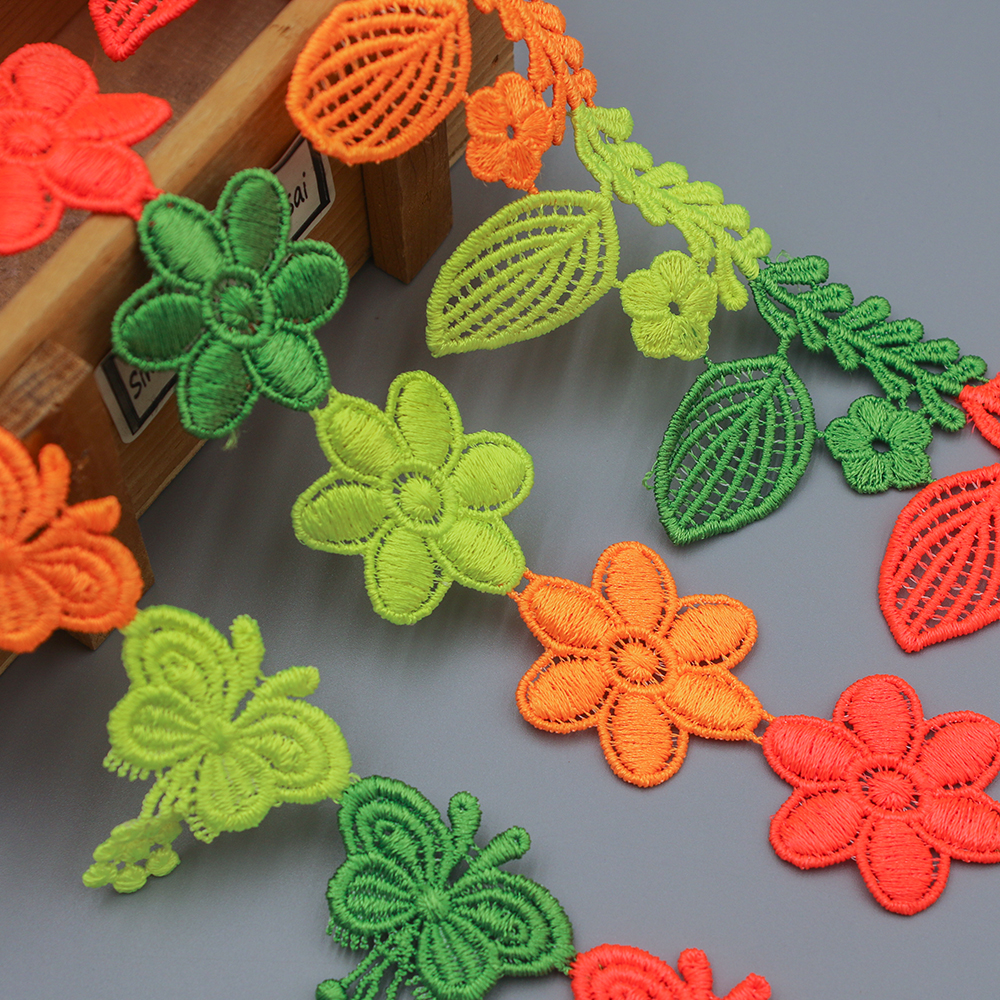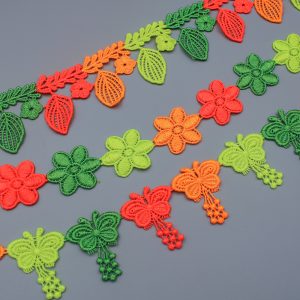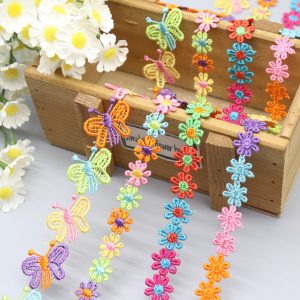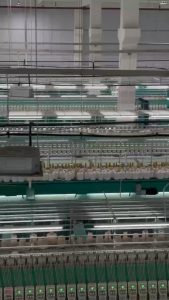Short Description:
Water soluble lace is an innovative textile product renowned for its unique property of dissolving in water after application. To understand its value and position in the market, it is helpful to contrast it with a similar, well-established product — traditional cotton embroidered lace. Both lace types are widely used in fashion, home textiles, and accessories, featuring designs crafted by embroidery or weaving, yet they differ significantly in materials, production processes, and application.
Table of Contents
What Does Water Soluble Lace Mean?
Water soluble lace is a type of lace fabric or embroidery backing that dissolves when exposed to water. It’s designed to be used in embroidery or sewing projects where the backing material needs to be removed completely after stitching, leaving behind only the delicate lace or embroidered design.
What is Water Soluble Fabric and Thread?
Water soluble fabric is any base material that dissolves in water after fabrication or embroidery. Water soluble thread, similarly, is a fiber designed to hold the embroidery in place during production but disappears on washing, revealing only the embroidered pattern or lace. This technique allows for delicate, floating lace structures that are unattainable with conventional fabrics.
How Does Water Soluble Embroidery Work?
Water soluble embroidery involves stitching intricate patterns onto water soluble fabric or stabilizers. Once the embroidery is complete, immersing the fabric in water dissolves the stabilizer or base fabric, leaving behind only the embroidered design, which can then be used as lace or appliqué. This method facilitates high-detail designs ideal for the fashion and home textile industries.
What is water soluble thread used for?
Water soluble thread is primarily used in embroidery and sewing applications where temporary stitches are needed. These threads dissolve completely when exposed to water, making them ideal for creating intricate designs, stabilizing delicate fabrics during embroidery, or producing lace-like patterns without leaving any visible backing. This allows for clean, lightweight, and detailed finished products, especially in fashion, home textiles, and craft projects.
Comparative Analysis: Water Soluble Lace vs. Cotton Embroidered Lace
Key Indicator | Water Soluble Lace | Cotton Embroidered Lace |
Production Cost | Generally higher due to specialized water soluble threads and stabilizers; cost varies with design complexity and technology. | Moderate cost with mature embroidery techniques and abundant raw materials; cost-effective for bulk production. |
Stability & Durability | Designed for temporary applications; dissolves upon washing, limiting durability — ideal for overlays, removable trims. | High stability and long-term durability; suitable for everyday apparel and home textiles needing lasting strength. |
Raw Material Supply | Requires access to specific water soluble threads and chemical stabilizers; availability can be limited depending on supplier networks. | Readily available cotton yarns and embroidery materials; broad supplier base globally, facilitating scalable sourcing. |
Factory Line Adaptability | Needs specialized machinery capable of handling water soluble threads and post-embroidery washing processes; additional drying and finishing steps required. | Compatible with standard embroidery equipment; well-established workflows support efficient large-scale production. |
Market and Application Insights
Water soluble lace and cotton embroidered lace serve overlapping but distinct niches. Water soluble lace excels in applications demanding intricate, delicate designs without residual backing — such as bridal overlays, lingerie inserts, and fine trims like black and white water soluble lace ribbons or water soluble lace trims widely sourced from China. Meanwhile, cotton embroidered lace emphasizes traditional durability and everyday wearability seen in underwear, dress fabrics, and home textiles like lace curtains.
The keywords of interest — water soluble lace fabric, water soluble lace trim, black and white water soluble lace ribbon trims, and water soluble lace dresses — highlight its versatility in premium fashion and decorative craft. Products like “Elegant Wide White French Lace Trim – 100% Polyester Luxury Water Soluble Lace for Garment Decoration | JX70486” illustrate customizable options offering both quality and aesthetic appeal.
Promoting Water Soluble Lace: B2B Considerations
To position water soluble lace effectively in B2B markets, the following strategic questions and actions are vital:
- How does the unique dissolving property of water soluble lace create opportunities for innovative garment design and differentiation compared to cotton embroidered lace?
- Emphasize creative freedom and lightweight aesthetics achievable only with water soluble lace.
- What investments in production line equipment and staff training are needed to support water soluble lace manufacturing alongside traditional lace products?
- Assess cost-benefit scenarios for upgrading machinery vs. production efficiencies.
- How can consistent raw material sourcing of water soluble threads and stabilizers be secured to avoid supply chain risks?
- Develop partnerships with specialized suppliers offering stable quality and volume.
- What cost efficiencies can be realized through scaling production while maintaining lace design complexity and quality?
- Optimize embroidery patterns and automate washing processes to reduce labor and material waste.
- Which customer segments—bridal fashion houses, lingerie brands, home décor manufacturers—most benefit from water soluble lace’s features, and how to tailor marketing to them?
- Collaborate on product development and sample trials to showcase applications.
- How to highlight water soluble lace’s sustainability profile, given that no harsh physical backing remains post-use, compared to conventional lace laminates?
- Incorporate eco-friendly messaging in branding and material sourcing.
Conclusion
Water soluble lace represents a sophisticated, niche textile product offering designers and manufacturers unique capabilities unmatched by traditional cotton embroidered lace. While production costs and supply chain complexities are higher, the intricate designs, lightweight structures, and innovative applications provide compelling value. By understanding these contrasts — in production cost, stability, raw materials, and factory adaptability — businesses can strategically integrate water soluble lace into their product portfolios and expand market reach.
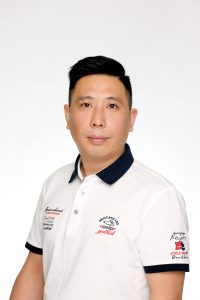
John Gan
John Gan specializes in professional lace and fabric customization, leading Shaoxing Yituo to expand globally with quality and innovation. He is committed to making the company a leading supplier through strong international partnerships.
